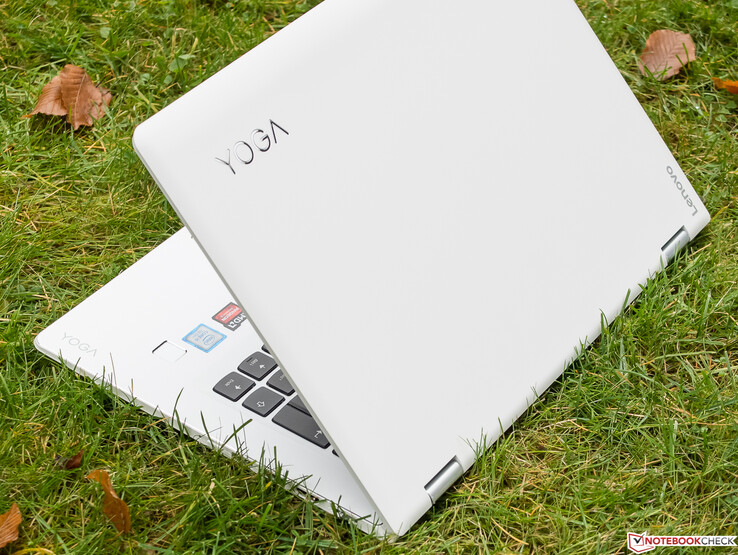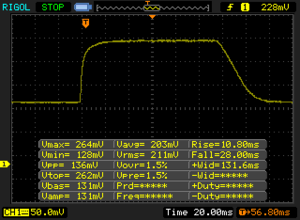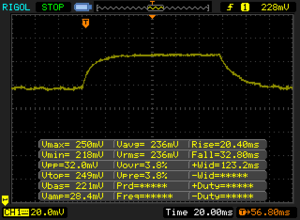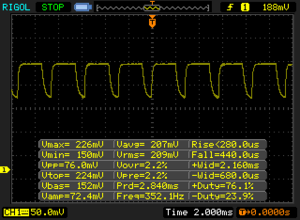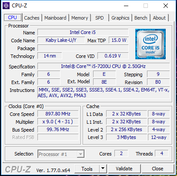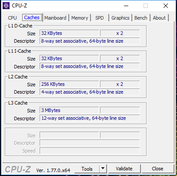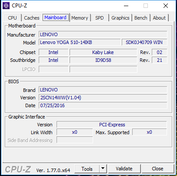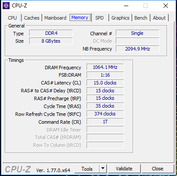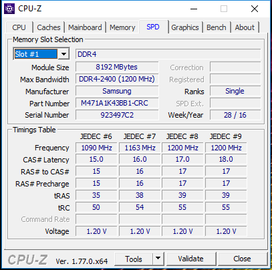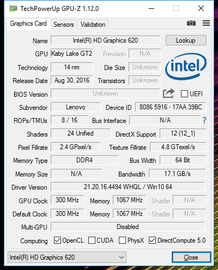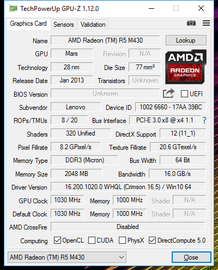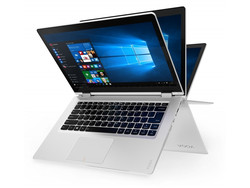Breve Análise do Conversível Lenovo Yoga 510-14IKB
Os Top 10
» Os Top 10 Portáteis Multimídia
» Os Top 10 Portáteis de Jogos
» Os Top 10 Portáteis Leves para Jogos
» Os Top 10 Portáteis Acessíveis de Escritório/Empresariais
» Os Top 10 Portáteis Premium de Escritório/Empresariais
» Os Top 10 dos Portáteis Workstation
» Os Top 10 Subportáteis
» Os Top 10 Ultrabooks
» Os Top 10 Conversíveis
» Os Top 10 Tablets
» Os Top 10 Smartphones
» A melhores Telas de Portáteis Analisadas Pela Notebookcheck
» Top 10 dos portáteis abaixo dos 500 Euros da Notebookcheck
» Top 10 dos Portáteis abaixo dos 300 Euros
Size Comparison
| SD Card Reader | |
| average JPG Copy Test (av. of 3 runs) | |
| Lenovo Yoga 3 Pro 13 80HE004LGE | |
| Lenovo Yoga 510-14IKB | |
| Dell Inspiron 13 7359-4839 | |
| maximum AS SSD Seq Read Test (1GB) | |
| Lenovo Yoga 3 Pro 13 80HE004LGE | |
| Lenovo Yoga 510-14IKB | |
| Dell Inspiron 13 7359-4839 | |
| Networking | |
| iperf Server (receive) TCP 1 m | |
| Lenovo Yoga 510-14IKB | |
| iperf Client (transmit) TCP 1 m | |
| Lenovo Yoga 510-14IKB | |
| |||||||||||||||||||||||||
iluminação: 91 %
iluminação com acumulador: 242 cd/m²
Contraste: 759:1 (Preto: 0.32 cd/m²)
ΔE ColorChecker Calman: 5.44 | ∀{0.5-29.43 Ø4.77}
ΔE Greyscale Calman: 4.74 | ∀{0.09-98 Ø5}
62.5% sRGB (Argyll 1.6.3 3D)
39.6% AdobeRGB 1998 (Argyll 1.6.3 3D)
43.17% AdobeRGB 1998 (Argyll 3D)
62.9% sRGB (Argyll 3D)
41.78% Display P3 (Argyll 3D)
Gamma: 2.38
CCT: 7799 K
| Lenovo Yoga 510-14IKB BOE0637 / BOE DT NV140FHM-N41, , 1920x1080, 14" | HP Spectre x360 13-w023dx Chi Mei CMN1367, , 1920x1080, 13.3" | Lenovo Yoga 3 Pro 13 80HE004LGE Samsung L_LLTN133YL03L01, , 3200x1800, 13.3" | Dell Inspiron 13 7359-4839 Samsung SDC864D / 133HL [Dell P/N: PVFF5], , 1920x1080, 13.3" | |
|---|---|---|---|---|
| Display | 51% | 50% | -4% | |
| Display P3 Coverage (%) | 41.78 | 65.4 57% | 64.6 55% | 40.31 -4% |
| sRGB Coverage (%) | 62.9 | 90.4 44% | 89.5 42% | 60.5 -4% |
| AdobeRGB 1998 Coverage (%) | 43.17 | 65.8 52% | 65.5 52% | 41.65 -4% |
| Response Times | 33% | 30% | 27% | |
| Response Time Grey 50% / Grey 80% * (ms) | 53 ? | 33.2 ? 37% | 36 ? 32% | 38 ? 28% |
| Response Time Black / White * (ms) | 39 ? | 28 ? 28% | 28 ? 28% | 29 ? 26% |
| PWM Frequency (Hz) | 350 ? | 1330 ? | ||
| Screen | 8% | 16% | -15% | |
| Brightness middle (cd/m²) | 243 | 334.6 38% | 314 29% | 253 4% |
| Brightness (cd/m²) | 248 | 319 29% | 294 19% | 232 -6% |
| Brightness Distribution (%) | 91 | 90 -1% | 83 -9% | 83 -9% |
| Black Level * (cd/m²) | 0.32 | 0.336 -5% | 0.57 -78% | 0.28 12% |
| Contrast (:1) | 759 | 996 31% | 551 -27% | 904 19% |
| Colorchecker dE 2000 * | 5.44 | 6.21 -14% | 2.18 60% | 6.36 -17% |
| Colorchecker dE 2000 max. * | 9.73 | 12 -23% | 6.48 33% | 12.72 -31% |
| Greyscale dE 2000 * | 4.74 | 7.71 -63% | 2.45 48% | 10.26 -116% |
| Gamma | 2.38 92% | 2.36 93% | 2.39 92% | 2.28 96% |
| CCT | 7799 83% | 6458 101% | 6745 96% | 6500 100% |
| Color Space (Percent of AdobeRGB 1998) (%) | 39.6 | 58.6 48% | 58 46% | 38 -4% |
| Color Space (Percent of sRGB) (%) | 62.5 | 90 44% | 89 42% | 60 -4% |
| Média Total (Programa/Configurações) | 31% /
20% | 32% /
25% | 3% /
-7% |
* ... menor é melhor
Exibir tempos de resposta
| ↔ Tempo de resposta preto para branco | ||
|---|---|---|
| 39 ms ... ascensão ↗ e queda ↘ combinadas | ↗ 12 ms ascensão | |
| ↘ 27 ms queda | ||
| A tela mostra taxas de resposta lentas em nossos testes e será insatisfatória para os jogadores. Em comparação, todos os dispositivos testados variam de 0.1 (mínimo) a 240 (máximo) ms. » 97 % de todos os dispositivos são melhores. Isso significa que o tempo de resposta medido é pior que a média de todos os dispositivos testados (20.2 ms). | ||
| ↔ Tempo de resposta 50% cinza a 80% cinza | ||
| 53 ms ... ascensão ↗ e queda ↘ combinadas | ↗ 20 ms ascensão | |
| ↘ 33 ms queda | ||
| A tela mostra taxas de resposta lentas em nossos testes e será insatisfatória para os jogadores. Em comparação, todos os dispositivos testados variam de 0.165 (mínimo) a 636 (máximo) ms. » 90 % de todos os dispositivos são melhores. Isso significa que o tempo de resposta medido é pior que a média de todos os dispositivos testados (31.6 ms). | ||
Cintilação da tela / PWM (modulação por largura de pulso)
| Tela tremeluzindo/PWM detectado | 350 Hz | ≤ 60 % configuração de brilho | |
A luz de fundo da tela pisca em 350 Hz (pior caso, por exemplo, utilizando PWM) Cintilação detectada em uma configuração de brilho de 60 % e abaixo. Não deve haver cintilação ou PWM acima desta configuração de brilho. A frequência de 350 Hz é relativamente alta, portanto, a maioria dos usuários sensíveis ao PWM não deve notar nenhuma oscilação. No entanto, há relatos de que alguns usuários ainda são sensíveis ao PWM em 500 Hz e acima, portanto, esteja atento. [pwm_comparison] Em comparação: 53 % de todos os dispositivos testados não usam PWM para escurecer a tela. Se PWM foi detectado, uma média de 8083 (mínimo: 5 - máximo: 343500) Hz foi medida. | |||
| Cinebench R15 | |
| CPU Single 64Bit | |
| Lenovo Yoga 510-14IKB | |
| HP Spectre x360 13-w023dx | |
| Dell Inspiron 13 7359-4839 | |
| Lenovo Yoga 3 Pro 13 80HE004LGE | |
| CPU Multi 64Bit | |
| Lenovo Yoga 510-14IKB | |
| HP Spectre x360 13-w023dx | |
| Dell Inspiron 13 7359-4839 | |
| Lenovo Yoga 3 Pro 13 80HE004LGE | |
| PCMark 8 - Home Score Accelerated v2 | |
| HP Spectre x360 13-w023dx | |
| Lenovo Yoga 510-14IKB | |
| Dell Inspiron 13 7359-4839 | |
| Lenovo Yoga 3 Pro 13 80HE004LGE | |
| PCMark 8 Home Score Accelerated v2 | 3550 pontos | |
| PCMark 8 Creative Score Accelerated v2 | 4529 pontos | |
Ajuda | ||
| Lenovo Yoga 510-14IKB Samsung MZYTY256HDHP | HP Spectre x360 13-w023dx Samsung PM951 NVMe MZVLV512 | Lenovo Yoga 3 Pro 13 80HE004LGE Samsung SSD PM851 MZNTE512HMJH | Dell Inspiron 13 7359-4839 Liteonit LCH-256V2S | |
|---|---|---|---|---|
| CrystalDiskMark 3.0 | 63% | -9% | -15% | |
| Read Seq (MB/s) | 518 | 1376 166% | 521 1% | 486.3 -6% |
| Write Seq (MB/s) | 476.5 | 571 20% | 238.6 -50% | 283.7 -40% |
| Read 512 (MB/s) | 408 | 679 66% | 417.3 2% | 337.5 -17% |
| Write 512 (MB/s) | 274.5 | 571 108% | 237.7 -13% | 283.5 3% |
| Read 4k (MB/s) | 35.66 | 42.66 20% | 35.9 1% | 26.75 -25% |
| Write 4k (MB/s) | 106.7 | 137.9 29% | 99.9 -6% | 85.3 -20% |
| Read 4k QD32 (MB/s) | 368.7 | 535 45% | 366.6 -1% | 309.7 -16% |
| Write 4k QD32 (MB/s) | 246.3 | 361.2 47% | 236.7 -4% | 250.8 2% |
| 3DMark 11 - 1280x720 Performance GPU | |
| Lenovo Yoga 510-14IKB | |
| HP Spectre x360 13-w023dx | |
| Dell Inspiron 13 7359-4839 | |
| Lenovo Yoga 3 Pro 13 80HE004LGE | |
| 3DMark - 1280x720 Cloud Gate Standard Graphics | |
| HP Spectre x360 13-w023dx | |
| Dell Inspiron 13 7359-4839 | |
| Lenovo Yoga 510-14IKB | |
| Lenovo Yoga 3 Pro 13 80HE004LGE | |
| 3DMark 06 Standard Score | 6246 pontos | |
| 3DMark Vantage P Result | 4697 pontos | |
| 3DMark 11 Performance | 1772 pontos | |
| 3DMark Ice Storm Standard Score | 39823 pontos | |
| 3DMark Cloud Gate Standard Score | 4744 pontos | |
| 3DMark Fire Strike Score | 899 pontos | |
Ajuda | ||
| baixo | média | alto | ultra | |
|---|---|---|---|---|
| Diablo III (2012) | 66.1 | 42.3 | 34.2 | 21.4 |
| StarCraft II: Heart of the Swarm (2013) | 43.9 | 25.9 | 10 | |
| BioShock Infinite (2013) | 42.3 | 26.5 | 22.5 | 8.2 |
| Metro: Last Light (2013) | 29.1 | 21.2 | 12.4 | |
| Battlefield 4 (2013) | 42.9 | 29.9 | 19.1 | |
| Dirt Rally (2015) | 117.3 | 32.5 | 15.9 | |
| The Witcher 3 (2015) | 18 | |||
| Dota 2 Reborn (2015) | 74 | 50.6 | 20.6 | 19.1 |
| Anno 2205 (2015) | 27.7 | 14.1 | ||
| Fallout 4 (2015) | 19.4 | 12.8 | ||
| Star Wars Battlefront (2015) | 36.3 | 22.2 | 10.1 | |
| Rainbow Six Siege (2015) | 47 | 29.3 | 14.2 | |
| Just Cause 3 (2015) | 25.1 | 19.5 | ||
| Far Cry Primal (2016) | 19 | 9 | ||
| The Division (2016) | 0 o jogo não começa | |||
| Overwatch (2016) | 41.3 | 31.3 | 14.5 | |
| Mirror's Edge Catalyst (2016) | 27 | 16.3 | ||
| Deus Ex Mankind Divided (2016) | 13.5 | |||
| Farming Simulator 17 (2016) | 66.1 | 43 | 17.3 |
Barulho
| Ocioso |
| 29 / 29 / 29 dB |
| Carga |
| 37.3 / 43.1 dB |
 | ||
30 dB silencioso 40 dB(A) audível 50 dB(A) ruidosamente alto |
||
min: | ||
(±) A temperatura máxima no lado superior é 40.1 °C / 104 F, em comparação com a média de 35.4 °C / 96 F , variando de 19.6 a 60 °C para a classe Convertible.
(-) A parte inferior aquece até um máximo de 46.1 °C / 115 F, em comparação com a média de 36.8 °C / 98 F
(+) Em uso inativo, a temperatura média para o lado superior é 25.1 °C / 77 F, em comparação com a média do dispositivo de 30.3 °C / ### class_avg_f### F.
(+) Os apoios para as mãos e o touchpad são mais frios que a temperatura da pele, com um máximo de 28.2 °C / 82.8 F e, portanto, são frios ao toque.
(±) A temperatura média da área do apoio para as mãos de dispositivos semelhantes foi 27.9 °C / 82.2 F (-0.3 °C / -0.6 F).
Lenovo Yoga 510-14IKB análise de áudio
(±) | o volume do alto-falante é médio, mas bom (###valor### dB)
Graves 100 - 315Hz
(-) | quase nenhum baixo - em média 16% menor que a mediana
(±) | a linearidade dos graves é média (14.5% delta para a frequência anterior)
Médios 400 - 2.000 Hz
(+) | médios equilibrados - apenas 4.1% longe da mediana
(±) | a linearidade dos médios é média (9.8% delta para frequência anterior)
Altos 2 - 16 kHz
(+) | agudos equilibrados - apenas 3.4% longe da mediana
(+) | os máximos são lineares (6.5% delta da frequência anterior)
Geral 100 - 16.000 Hz
(±) | a linearidade do som geral é média (22.7% diferença em relação à mediana)
Comparado com a mesma classe
» 68% de todos os dispositivos testados nesta classe foram melhores, 5% semelhantes, 27% piores
» O melhor teve um delta de 6%, a média foi 20%, o pior foi 57%
Comparado com todos os dispositivos testados
» 66% de todos os dispositivos testados foram melhores, 6% semelhantes, 28% piores
» O melhor teve um delta de 4%, a média foi 24%, o pior foi 134%
HP Spectre x360 13-w023dx análise de áudio
(±) | o volume do alto-falante é médio, mas bom (###valor### dB)
Graves 100 - 315Hz
(-) | quase nenhum baixo - em média 17% menor que a mediana
(±) | a linearidade dos graves é média (12.7% delta para a frequência anterior)
Médios 400 - 2.000 Hz
(+) | médios equilibrados - apenas 3.7% longe da mediana
(+) | médios são lineares (6.3% delta para frequência anterior)
Altos 2 - 16 kHz
(+) | agudos equilibrados - apenas 2.4% longe da mediana
(±) | a linearidade dos máximos é média (7.2% delta para frequência anterior)
Geral 100 - 16.000 Hz
(±) | a linearidade do som geral é média (21.9% diferença em relação à mediana)
Comparado com a mesma classe
» 62% de todos os dispositivos testados nesta classe foram melhores, 8% semelhantes, 31% piores
» O melhor teve um delta de 6%, a média foi 20%, o pior foi 57%
Comparado com todos os dispositivos testados
» 62% de todos os dispositivos testados foram melhores, 7% semelhantes, 31% piores
» O melhor teve um delta de 4%, a média foi 24%, o pior foi 134%
Lenovo Yoga 3 Pro 13 80HE004LGE análise de áudio
(-) | alto-falantes não muito altos (###valor### dB)
Analysis not possible as minimum curve is missing or too high
Dell Inspiron 13 7359-4839 análise de áudio
(-) | alto-falantes não muito altos (###valor### dB)
Graves 100 - 315Hz
(±) | graves reduzidos - em média 8.4% menor que a mediana
(+) | o baixo é linear (6.8% delta para a frequência anterior)
Médios 400 - 2.000 Hz
(+) | médios equilibrados - apenas 4.7% longe da mediana
(+) | médios são lineares (6.8% delta para frequência anterior)
Altos 2 - 16 kHz
(+) | agudos equilibrados - apenas 1.9% longe da mediana
(±) | a linearidade dos máximos é média (7.9% delta para frequência anterior)
Geral 100 - 16.000 Hz
(+) | o som geral é linear (14.1% diferença em relação à mediana)
Comparado com a mesma classe
» 20% de todos os dispositivos testados nesta classe foram melhores, 4% semelhantes, 77% piores
» O melhor teve um delta de 6%, a média foi 20%, o pior foi 57%
Comparado com todos os dispositivos testados
» 16% de todos os dispositivos testados foram melhores, 4% semelhantes, 80% piores
» O melhor teve um delta de 4%, a média foi 24%, o pior foi 134%
| desligado | |
| Ocioso | |
| Carga |
|
Key:
min: | |
| Lenovo Yoga 510-14IKB i5-7200U, Radeon R5 M430, Samsung MZYTY256HDHP, IPS, 1920x1080, 14" | HP Spectre x360 13-w023dx i7-7500U, HD Graphics 620, Samsung PM951 NVMe MZVLV512, IPS, 1920x1080, 13.3" | Lenovo Yoga 3 Pro 13 80HE004LGE 5Y70, HD Graphics 5300, Samsung SSD PM851 MZNTE512HMJH, IPS, 3200x1800, 13.3" | Dell Inspiron 13 7359-4839 6500U, HD Graphics 520, Liteonit LCH-256V2S, IPS, 1920x1080, 13.3" | |
|---|---|---|---|---|
| Power Consumption | 2% | -3% | 18% | |
| Idle Minimum * (Watt) | 3.9 | 5.5 -41% | 4.8 -23% | 4 -3% |
| Idle Average * (Watt) | 7.1 | 6.7 6% | 10.7 -51% | 4.8 32% |
| Idle Maximum * (Watt) | 7.7 | 7.1 8% | 11.8 -53% | 7.6 1% |
| Load Average * (Watt) | 33.4 | 33.1 1% | 18.3 45% | 30 10% |
| Load Maximum * (Watt) | 55.9 | 35.2 37% | 19.7 65% | 29.3 48% |
* ... menor é melhor
| Lenovo Yoga 510-14IKB i5-7200U, Radeon R5 M430, 35 Wh | HP Spectre x360 13-w023dx i7-7500U, HD Graphics 620, 57.8 Wh | Lenovo Yoga 3 Pro 13 80HE004LGE 5Y70, HD Graphics 5300, 44 Wh | Dell Inspiron 13 7359-4839 6500U, HD Graphics 520, 44 Wh | |
|---|---|---|---|---|
| Duração da bateria | 47% | -29% | 20% | |
| Reader / Idle (h) | 12 | 20.6 72% | 14.8 23% | |
| WiFi v1.3 (h) | 6.2 | 9.3 50% | 4.4 -29% | 8.1 31% |
| Load (h) | 1.7 | 2 18% | 1.8 6% |
Pro
Contra
Antes de começar a mencionar as diversas falhas listadas na lista dos contras, vamos ter em conta que o preço é de 800 Euros. Para este preço, achamos que a tela do Lenovo Yoga 510-14IKB é inferior, mas além do "Screen Bleeding", é aceitável. No entanto, não há justificativa para o fraco desempenho do WLAN. Além disso, o fato de que quase nenhum conversível oferecem uma escotilha de manutenção, não impede a Lenovo de instalar uma neste modelo, dado que isso poderia aumentar a conveniência de fazer atualizações e manutenções, de forma significante. É claro que o fabricante afirma que esta característica para a fácil manutenção impede que eles possam construir uma carcaça fina e leve, mas, como isto economiza para o usuário altos preços de reparação e atualização, pode ser razoável para eles encontrar uma forma de alojar uma escotilha de manutenção.
No lado dos pros, temos o ótimo acabamento e a elegante carcaça (subjetivo). Os mecanismos de segurança também são uma surpresa, dado que poucos aparelhos desta faixa de preços, oferecem eles.
O conversível Yoga deve ser muito mais econômico, dado que a Lenovo não precisou de uma placa de vídeo dedicada. Este motivo, combinado com a curta duração da bateria, nos deixou com sentimentos confusos. Nós não podemos recomendar sinceramente este conversível para os nossos leitores.
Lenovo Yoga 510-14IKB
- 11/17/2016 v5.1 (old)
Sven Kloevekorn


